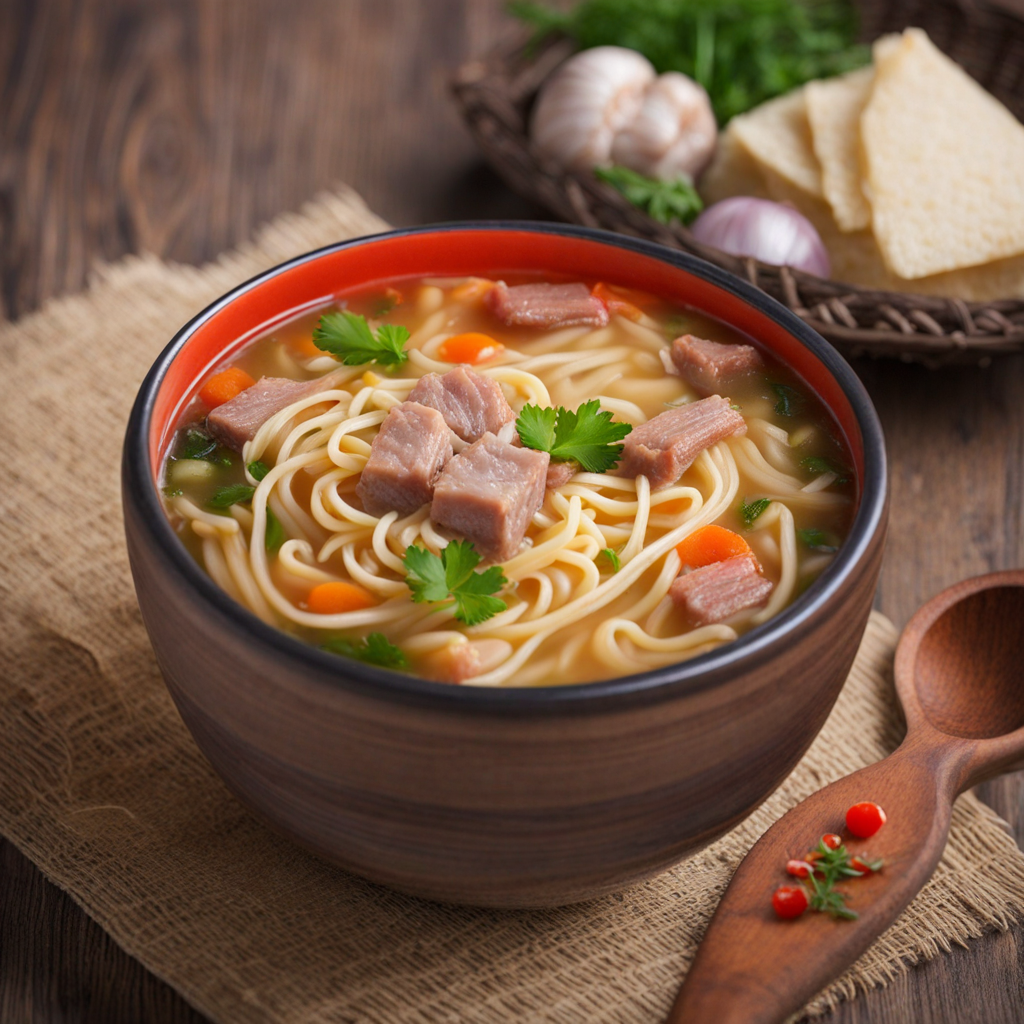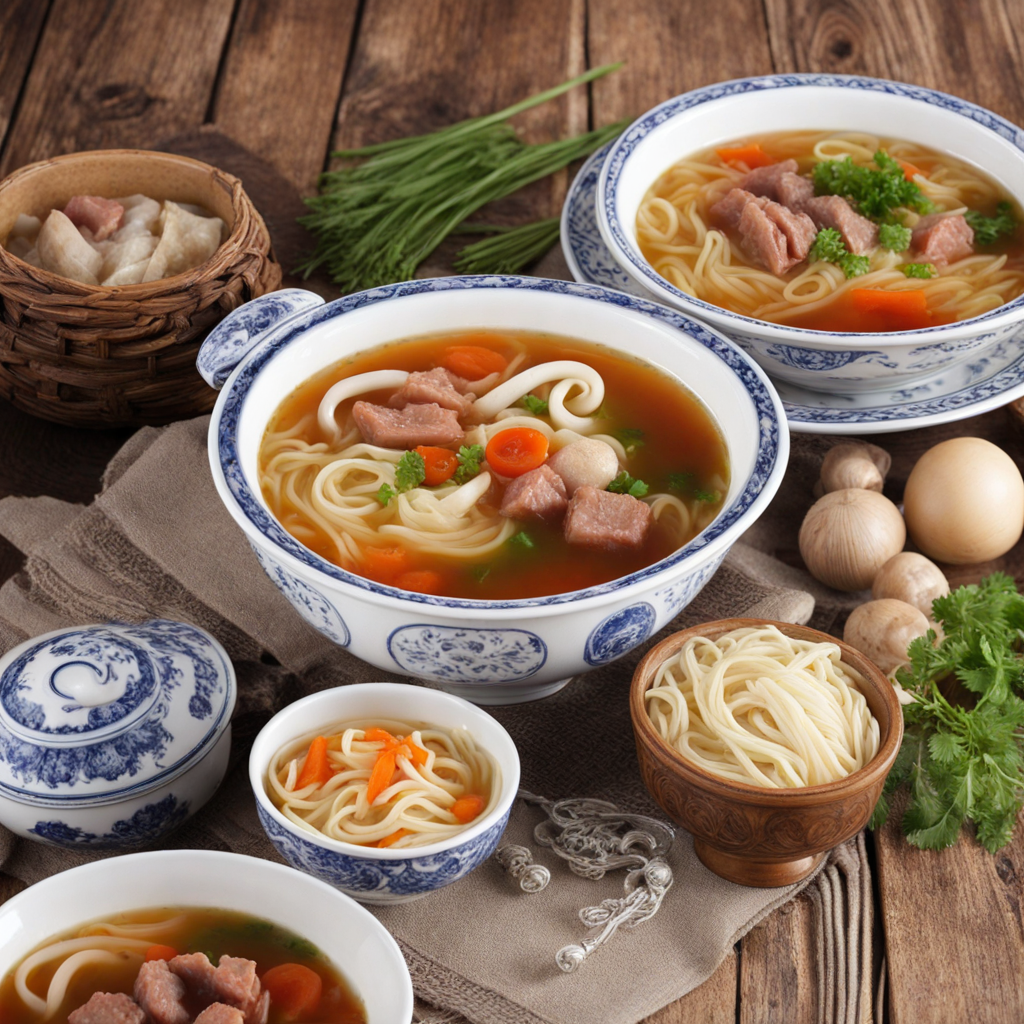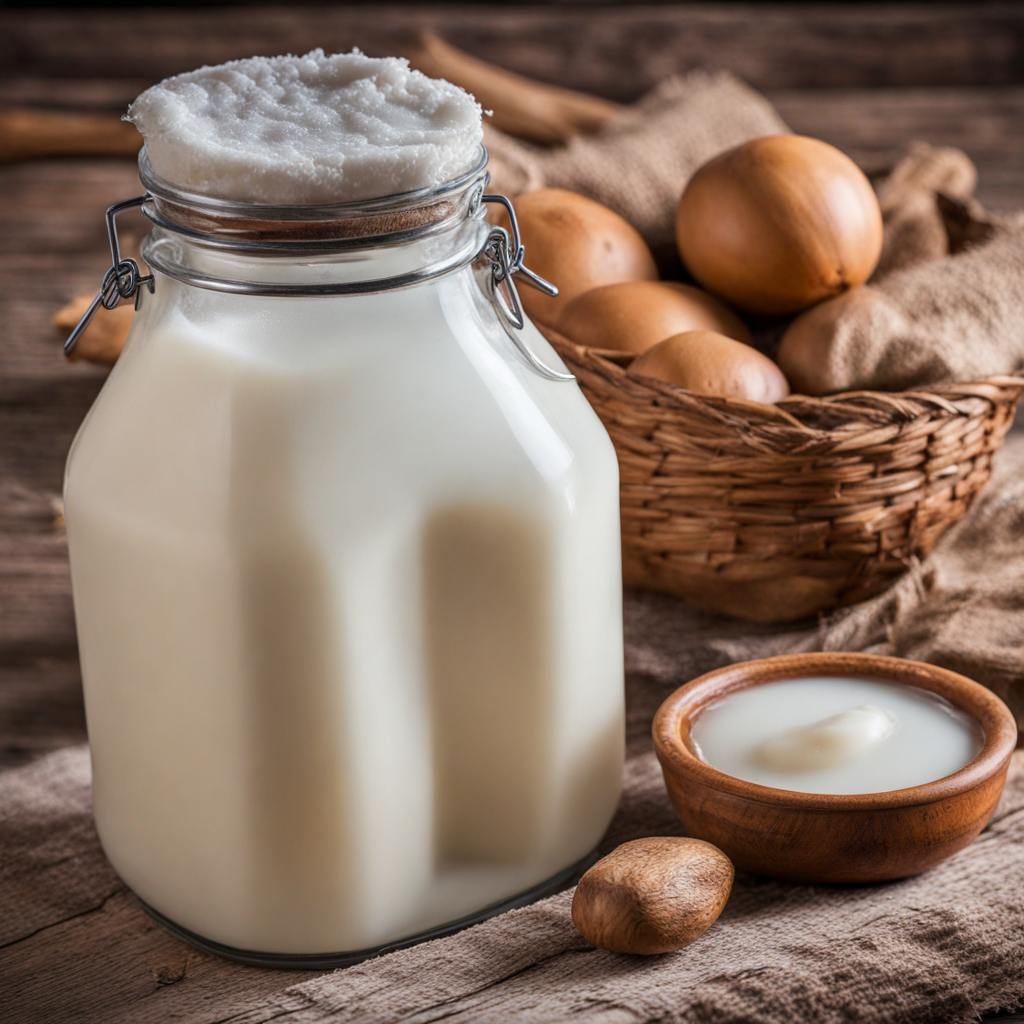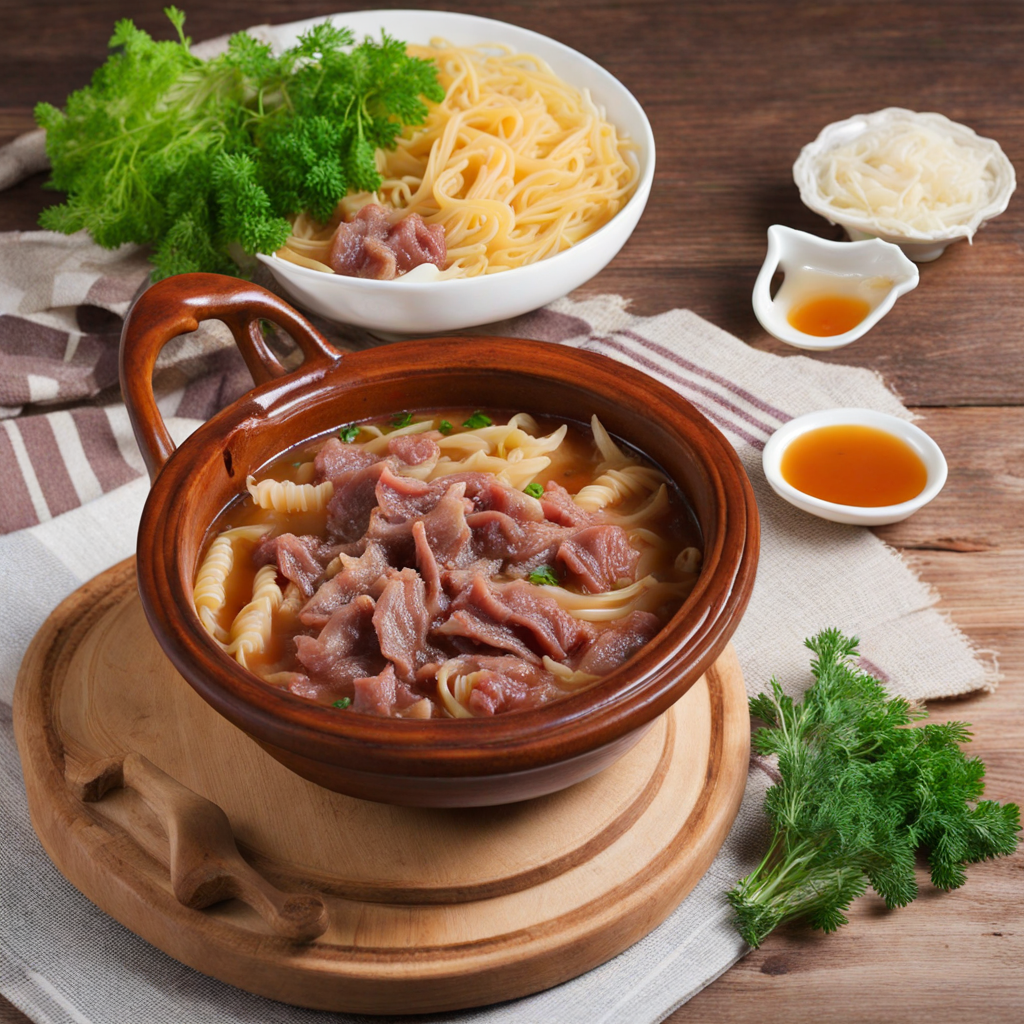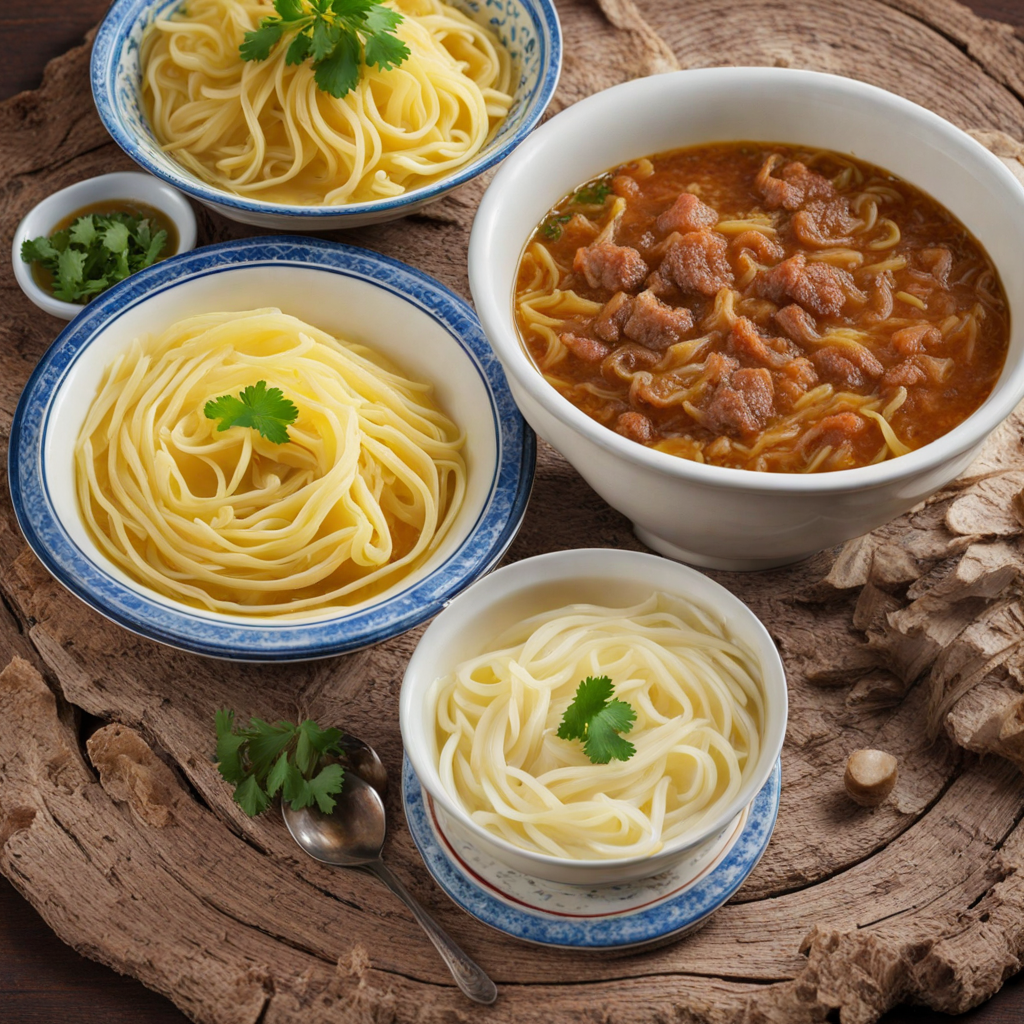Tokmach
Tokmach is a traditional Kazakh dish that offers a delightful combination of flavors and textures, making it a unique culinary experience. This hearty noodle soup is typically made with homemade dough, which is rolled thin and cut into wide, flat strips. The noodles are cooked in a rich broth, often flavored with meat—usually lamb or beef—alongside a medley of vegetables such as carrots, potatoes, and onions. The cooking process allows the noodles to absorb the savory essence of the broth, resulting in a deeply satisfying dish that warms both the body and soul. The broth of Tokmach is often seasoned with a variety of spices, including black pepper and garlic, lending it a fragrant aroma that enhances the overall experience. Depending on the region and family traditions, additional ingredients like herbs or spices may be added, giving each bowl a distinct character. The use of fresh, local ingredients showcases the agricultural bounty of Kazakhstan, with many families taking pride in their homemade versions, passed down through generations. Served hot and often garnished with fresh herbs, Tokmach is not just a meal; it is a comforting embrace in a bowl. It is typically enjoyed during gatherings and special occasions, making it a dish that brings people together. For those looking to explore new flavors, Tokmach offers a taste of Kazakhstan's rich culinary heritage, blending simplicity with depth of flavor in every spoonful.
How It Became This Dish
Origin and Ingredients Тоқмаш, a traditional dish from Kazakhstan, has its roots deeply embedded in the nomadic lifestyle of the Kazakh people. This dish primarily consists of handmade noodles, which are often served with meat, typically beef or lamb, and a variety of vegetables. The primary ingredient, flour, has been a staple in the diets of many Central Asian cultures, but the distinctive preparation and presentation of Тоқмаш set it apart as a unique Kazakh culinary creation. The noodles are usually thinly rolled out, cut into strips, and then boiled before being combined with the savory meat and broth, creating a hearty dish that reflects the agricultural and pastoral heritage of the region. The preparation of Тоқмаш often involves a communal effort, where family members gather to make the noodles from scratch. This practice not only reinforces family bonds but also highlights the importance of community in Kazakh culture. The act of kneading the dough and cutting it into strips can be seen as a ritual that connects generations, as many families pass down their unique recipes and techniques. The process is labor-intensive, but it is a labor of love that underscores the significance of food in fostering relationships. \n\n Cultural Significance In Kazakhstan, food is not just about sustenance; it is an integral part of cultural identity and social gatherings. Тоқмаш is often served during significant events such as weddings, holidays, and family celebrations. It embodies the spirit of hospitality that Kazakh people are renowned for, as offering food to guests is a sign of respect and goodwill. The dish's rich flavors and hearty ingredients make it a favored choice for gatherings where a sense of warmth and community is desired. Moreover, Тоқмаш is often accompanied by traditional drinks such as кумыс (fermented mare’s milk) or шұбат (fermented camel's milk), which further enhances the dining experience. The combination of these foods and drinks reflects the nomadic lifestyle of the Kazakh people, who relied on livestock for sustenance as they traveled across the vast steppes. The consumption of Тоқмаш, therefore, is not just about enjoying a meal; it is about embracing a lifestyle that celebrates resilience, adaptability, and the beauty of sharing food within a community. \n\n Evolution of the Dish Over the years, Тоқмаш has evolved, influenced by various factors such as migration, trade, and cultural exchanges with neighboring regions. The Silk Road, which once passed through Kazakhstan, facilitated the exchange of not only goods but also culinary techniques. As traders and travelers passed through the region, they introduced new spices, herbs, and cooking methods that gradually found their way into traditional Kazakh cuisine. In contemporary Kazakhstan, Тоқмаш has seen adaptations that reflect modern tastes and lifestyles. While traditional recipes remain popular, younger generations are experimenting with new ingredients, incorporating local vegetables like carrots and potatoes, and even introducing variations that use different types of meat or alternative cooking techniques. This evolution demonstrates the resilience of Kazakh cuisine, as it adapts to changing times while still honoring its roots. \n\n Regional Variations Kazakhstan is a vast country with diverse geographical landscapes, which has led to regional variations of Тоқмаш. In southern Kazakhstan, for example, the dish may include more spices and vegetables, reflecting the agricultural richness of the area. Here, the use of herbs such as dill and coriander is more pronounced, offering a fresher flavor profile compared to the more traditional versions found in northern regions. In contrast, northern variants of Тоқмаш might emphasize heartier flavors and ingredients due to the colder climate, often featuring richer broths and more robust meats. These regional differences showcase the adaptability of the dish, as local resources and cultural practices influence how it is prepared and enjoyed. This diversity is a testament to the rich tapestry of Kazakhstan’s culinary heritage, as each region contributes its unique flair to the traditional dish. \n\n Modern Popularity In recent years, Тоқмаш has gained popularity not only within Kazakhstan but also among the global culinary community. As Kazakhstan has opened up to tourism and international exchange, more people are discovering Kazakh cuisine, and Тоқмаш has emerged as a signature dish that captivates visitors. Restaurants in urban areas have begun to offer gourmet interpretations of the dish, often elevating traditional recipes with modern presentation and culinary techniques. Furthermore, the rise of food festivals and cultural events celebrating Kazakh heritage has played a crucial role in promoting Тоқмаш. These events often feature cooking demonstrations, allowing chefs to showcase their skills while educating attendees about the historical significance of the dish. As a result, Тоқмаш has transcended its role as a simple meal to become a symbol of national pride and cultural identity for the Kazakh people. \n\n Conclusion In summary, Тоқмаш is much more than just a dish; it is a representation of Kazakh culture, community, and culinary tradition. Its origins reflect the nomadic lifestyle of the Kazakh people, while its evolution speaks to the adaptability and resilience of their culinary practices. As it continues to grow in popularity both locally and internationally, Тоқмаш stands as a delicious testament to the rich history and vibrant culture of Kazakhstan, inviting all to share in its flavors and stories.
You may like
Discover local flavors from Kazakhstan


